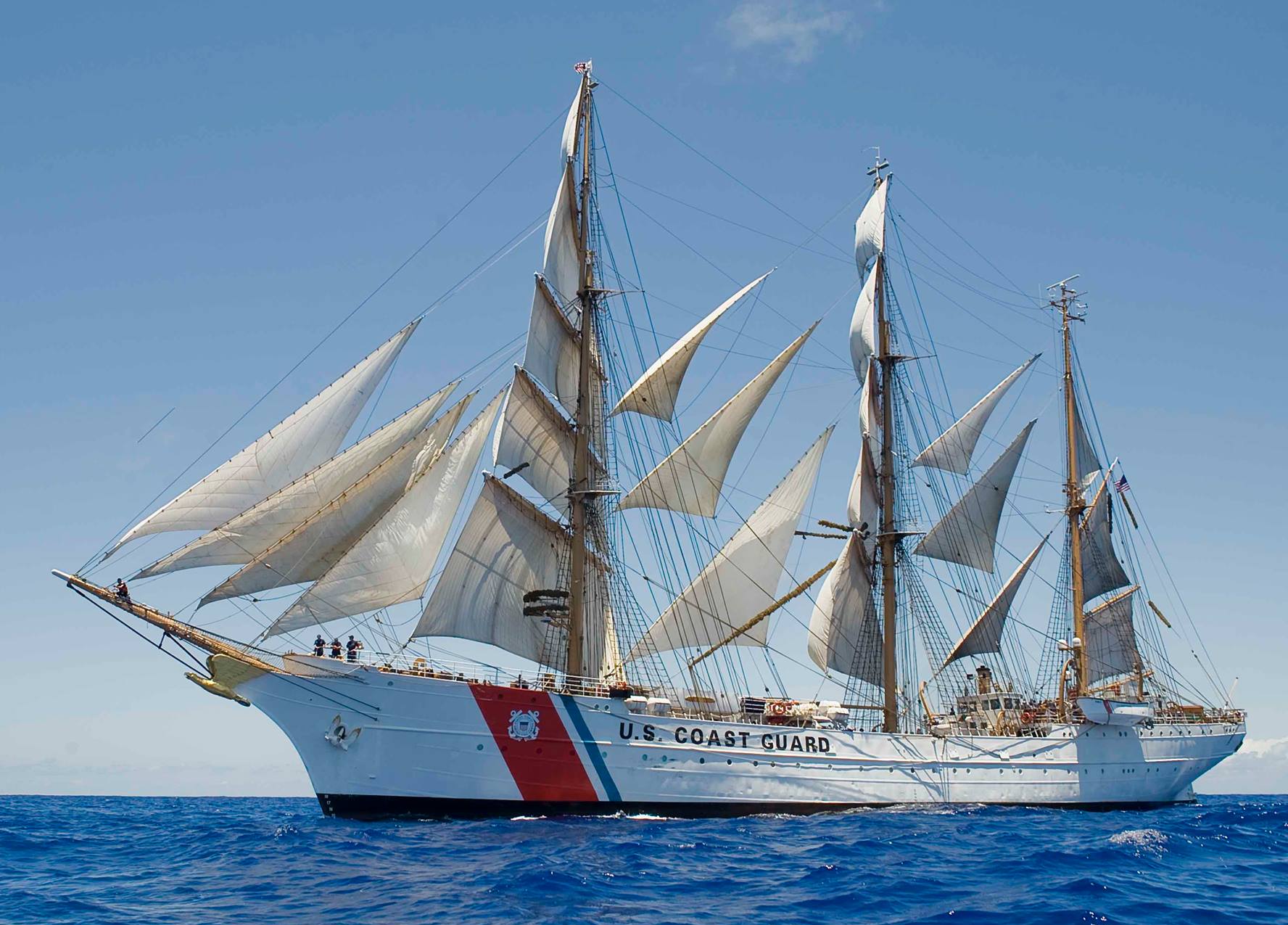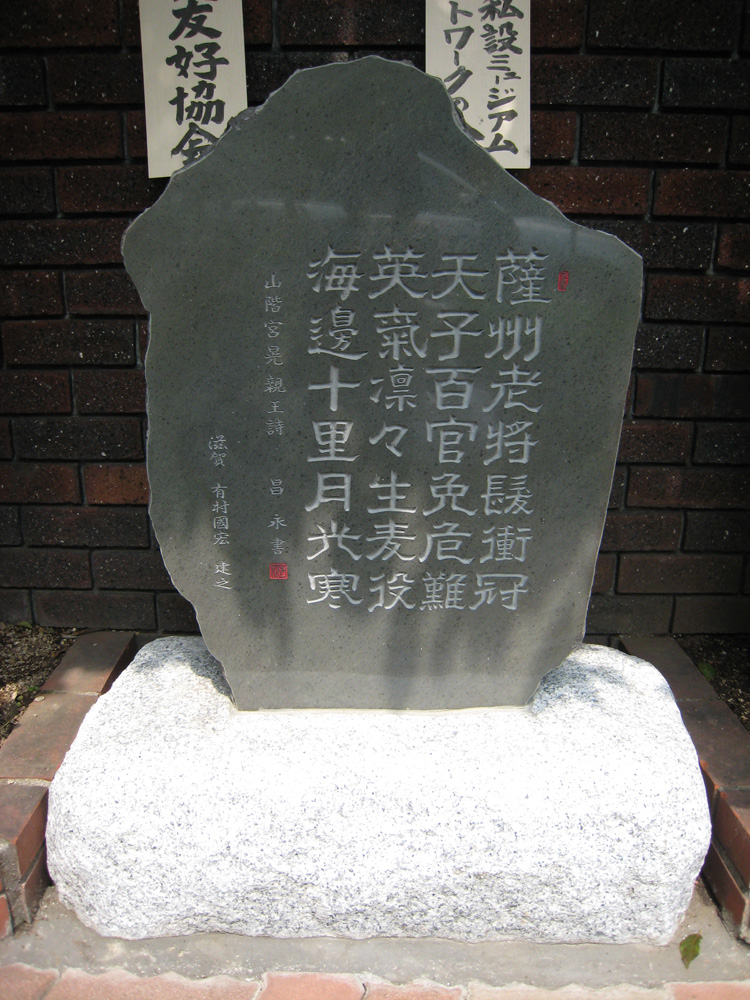|
Order To Expel Barbarians
The was an edict issued by the Japanese Emperor Kōmei in 1863 against the Westernization of Japan following the opening of the country by Commodore Perry in 1854. The order The edict was based on widespread anti-foreign and legitimist sentiment, called the "Revere the Emperor, Expel the Barbarians" movement. Emperor Kōmei personally agreed with such sentiments, and – breaking with centuries of imperial tradition – began to take an active role in matters of state: as opportunities arose, he fulminated against the treaties and attempted to interfere in the shogunal succession. His efforts culminated on March 11, 1863 with his "Order to expel barbarians". A deadline for the expulsion was set two months later to May 11. Consequences The Shogunate had no intention of enforcing the order, and the Edict inspired attacks against the Shogunate itself as well as against foreigners in Japan. The most famous incident was the firing on foreign shipping in the Shimonoseki Strait off ... [...More Info...] [...Related Items...] OR: [Wikipedia] [Google] [Baidu] |
War Reparations
War reparations are compensation payments made after a war by one side to the other. They are intended to cover damage or injury inflicted during a war. History Making one party pay a war indemnity is a common practice with a long history. Rome imposed large indemnities on Carthage after the First (Treaty of Lutatius) and Second Punic Wars. Some war reparations induced changes in monetary policy. For example, the French payment following the Franco-Prussian war played a major role in Germany's decision to adopt the gold standard; the 230 million silver taels in reparations imposed on defeated China after the First Sino-Japanese War led Japan to a similar decision. There have been attempts to codify reparations both in the Statutes of the International Criminal Court and the UN Basic Principles on the Right to a Remedy and Reparation for Victims, and some scholars have argued that individuals should have a right to seek compensation for wrongs they sustained during warfar ... [...More Info...] [...Related Items...] OR: [Wikipedia] [Google] [Baidu] |
1863 In Japan
Events from the year 1863 in Japan. Incumbents *Emperor: Kōmei Events *March 11 - Order to expel barbarians issued by the Emperor. *July 16 - Battle of Shimonoseki Straits *July 20-August 14 - First Shimonoseki Campaign *August 15–17 - Bombardment of Kagoshima *September 29 - Tenchūgumi Incident *December 29 - Second Japanese Embassy to Europe (1863) Births *February 23 - Katsusaburō Yamagiwa, pathologist *March 14 - Tokutomi Sohō Deaths *August 27 - Aizawa Seishisai *October 27? - Serizawa Kamo Serizawa Kamo (芹沢 鴨; September 2, 1826 – October 30, 1863) was a samurai known for being the original lead commander of the Shinsengumi. He trained in and received a licence in the Shindō Munen-ryū. "Kamo" means goose or duck in Japane ... {{Asia topic, 1863 in 1860s in Japan Years of the 19th century in Japan ... [...More Info...] [...Related Items...] OR: [Wikipedia] [Google] [Baidu] |
Xenelasia
Xenelasia ( grc, ξενηλασία, ) was the practice in ancient Doric Crete and Lacedæmonia of expelling foreigners deemed injurious to the public welfare. The isolationist customs of Sparta (which included discouraging Spartan citizens from traveling outside the commonwealth) may also sometimes be referred to as xenelasia. The majority of ancient Greek authors attribute the codification of this practice to Lycurgus. Application of Xenelasia laws In Lacedæmonia ''Xenelasia'' is most famously associated with Sparta. Lacedæmonian magistrates had the authorization to expel any person who posed a threat to public order and morals, for they considered their state a family writ large. While foreigners were allowed in for religious festivals and missions of state, they were generally not permitted to live in the environs, though special exceptions might be given to friends and allies, (laconophiles) like Xenophon. Xenophon himself wrote about ''xenelasia'' in his ''Constituti ... [...More Info...] [...Related Items...] OR: [Wikipedia] [Google] [Baidu] |
Bakumatsu
was the final years of the Edo period when the Tokugawa shogunate ended. Between 1853 and 1867, Japan ended its isolationist foreign policy known as and changed from a feudal Tokugawa shogunate to the modern empire of the Meiji government. The major ideological-political divide during this period was between the pro-imperial nationalists called and the shogunate forces, which included the elite swordsmen. Although these two groups were the most visible powers, many other factions attempted to use the chaos of to seize personal power.Hillsborough, ''page # needed'' Furthermore, there were two other main driving forces for dissent: first, growing resentment on the part of the (or outside lords), and second, growing anti-Western sentiment following the arrival of Matthew C. Perry. The first related to those lords whose predecessors had fought against Tokugawa forces at the Battle of Sekigahara in 1600, after which they had been permanently excluded from all powerful p ... [...More Info...] [...Related Items...] OR: [Wikipedia] [Google] [Baidu] |
Meiji Restoration
The , referred to at the time as the , and also known as the Meiji Renovation, Revolution, Regeneration, Reform, or Renewal, was a political event that restored practical imperial rule to Japan in 1868 under Emperor Meiji. Although there were ruling emperors before the Meiji Restoration, the events restored practical abilities and consolidated the political system under the Emperor of Japan. The goals of the restored government were expressed by the new emperor in the Charter Oath. The Restoration led to enormous changes in Japan's political and social structure and spanned both the late Edo period (often called the Bakumatsu) and the beginning of the Meiji era, during which time Japan rapidly industrialized and adopted Western ideas and production methods. Foreign influence The Japanese knew they were behind the Western powers when US Commodore Matthew C. Perry came to Japan in 1853 in large warships with armaments and technology that far outclassed those of Japan, wit ... [...More Info...] [...Related Items...] OR: [Wikipedia] [Google] [Baidu] |
Boshin War
The , sometimes known as the Japanese Revolution or Japanese Civil War, was a civil war in Japan fought from 1868 to 1869 between forces of the ruling Tokugawa shogunate and a clique seeking to seize political power in the name of the Imperial Court. The war stemmed from dissatisfaction among many nobles and young samurai with the shogunate's handling of foreigners following the opening of Japan during the prior decade. Increasing Western influence in the economy led to a decline similar to that of other Asian countries at the time. An alliance of western samurai, particularly the domains of Chōshū, Satsuma, and Tosa, and court officials secured control of the Imperial Court and influenced the young Emperor Meiji. Tokugawa Yoshinobu, the sitting ''shōgun'', realizing the futility of his situation, abdicated and handed over political power to the emperor. Yoshinobu had hoped that by doing this the House of Tokugawa could be preserved and participate in the future gov ... [...More Info...] [...Related Items...] OR: [Wikipedia] [Google] [Baidu] |
Bombardment Of Kagoshima
The Bombardment of Kagoshima, also known as the , was a military engagement fought between Britain and the Satsuma Domain in Kagoshima from 15 to 17 August 1863. The British were attempting to extract compensation and legal justice from ''daimyo'' Shimazu Tadayoshi for the 1862 Namamugi Incident, when a Royal Navy fleet commanded by Sir Augustus Leopold Kuper was fired on from Satsuma coastal batteries near Kagoshima. The British responded by bombarding the city in retaliation, but were unable to gain a conclusive victory and retreated two days later. The Satsuma declared victory and after negotiations fulfilled some British demands for the Namamugi Incident. Background On 14 September 1862, a confrontation occurred in Japan between a British merchant, Charles Lennox Richardson, and the entourage of Shimazu Hisamitsu, father and regent of Satsuma ''daimyo'' Shimazu Tadayoshi. After Richardson ignored warnings to stay out the entourage's way while travelling on a road nea ... [...More Info...] [...Related Items...] OR: [Wikipedia] [Google] [Baidu] |
Daimyō
were powerful Japanese magnates, feudal lords who, from the 10th century to the early Meiji period in the middle 19th century, ruled most of Japan from their vast, hereditary land holdings. They were subordinate to the shogun and nominally to the emperor and the '' kuge''. In the term, means 'large', and stands for , meaning 'private land'. From the '' shugo'' of the Muromachi period through the Sengoku to the ''daimyo'' of the Edo period, the rank had a long and varied history. The backgrounds of ''daimyo'' also varied considerably; while some ''daimyo'' clans, notably the Mōri, Shimazu and Hosokawa, were cadet branches of the Imperial family or were descended from the ''kuge'', other ''daimyo'' were promoted from the ranks of the samurai, notably during the Edo period. ''Daimyo'' often hired samurai to guard their land, and they paid the samurai in land or food as relatively few could afford to pay samurai in money. The ''daimyo'' era ended soon after the Me ... [...More Info...] [...Related Items...] OR: [Wikipedia] [Google] [Baidu] |
Kagoshima
, abbreviated to , is the capital city of Kagoshima Prefecture, Japan. Located at the southwestern tip of the island of Kyushu, Kagoshima is the largest city in the prefecture by some margin. It has been nicknamed the "Naples of the Eastern world" for its bay location (Aira Caldera), hot climate, and emblematic stratovolcano, Sakurajima. The city was officially founded on April 1, 1889. It merged with Taniyama City on April 29, 1967 and with Yoshida Town, Sakurajima Town, Kiire Town, Matsumoto Town and Kōriyama Town on November 1, 2004. Etymology The name "Kagoshima" (鹿児島) literally means "deer child island" or "young-deer island". In the Kagoshima dialect, local names for the city include “かごっま (Kagomma)”, “かごんま (Kagonma)”, “かごいま (Kagoima)” and “かごひま (Kagohima)”. While the kanji for Kagoshima ( 鹿 児 島) literally mean "deer child island", or "island of the fawn" for certain, the source etymology is not clear an ... [...More Info...] [...Related Items...] OR: [Wikipedia] [Google] [Baidu] |
Namamugi Incident
The , also known as the Kanagawa incident and Richardson affair, was a political crisis that occurred in the Tokugawa Shogunate of Japan during the ''Bakumatsu'' on 14 September 1862. Charles Lennox Richardson, a British merchant, was killed by the armed retinue of Shimazu Hisamitsu, the regent of the Satsuma Domain, on a road in Namamugi near Kawasaki. Richardson's murder sparked outrage among Europeans for violating their extraterritoriality in Japan, while the Japanese argued Richardson had disrespected Shimazu and was justifiably killed under the ''Kiri-sute gomen'' rule. British demands for compensation and failure by the Satsuma to respond resulted in the Bombardment of Kagoshima (or Anglo-Satsuma War) in August 1863. Course of events On 14 September 1862, four British subjects – the Shanghai-based merchant Charles Lennox Richardson, two Yokohama-based merchants, Woodthorpe Charles Clark and William Marshall, and Marshall's sister-in-law Margaret Watson Borradaile ... [...More Info...] [...Related Items...] OR: [Wikipedia] [Google] [Baidu] |
Satsuma Domain
The , briefly known as the , was a domain (''han'') of the Tokugawa shogunate of Japan during the Edo period from 1602 to 1871. The Satsuma Domain was based at Kagoshima Castle in Satsuma Province, the core of the modern city of Kagoshima, located in the south of the island of Kyushu. The Satsuma Domain was ruled for its existence by the '' Tozama'' ''daimyō'' of the Shimazu clan, who had ruled the Kagoshima area since the 1200s, and covered territory in the provinces of Satsuma, Ōsumi and Hyūga. The Satsuma Domain was assessed under the '' Kokudaka'' system and its value peaked at 770,000 '' koku'', the second-highest domain in Japan after the Kaga Domain. Totman, Conrad. (1993) ''Early Modern Japan'', p. 119 The Satsuma Domain was one of the most powerful and prominent of Japan's domains during the Edo period, conquering the Ryukyu Kingdom as a vassal state after the invasion of Ryukyu in 1609, and clashing with the British during the bombardment of Kagoshima in ... [...More Info...] [...Related Items...] OR: [Wikipedia] [Google] [Baidu] |







